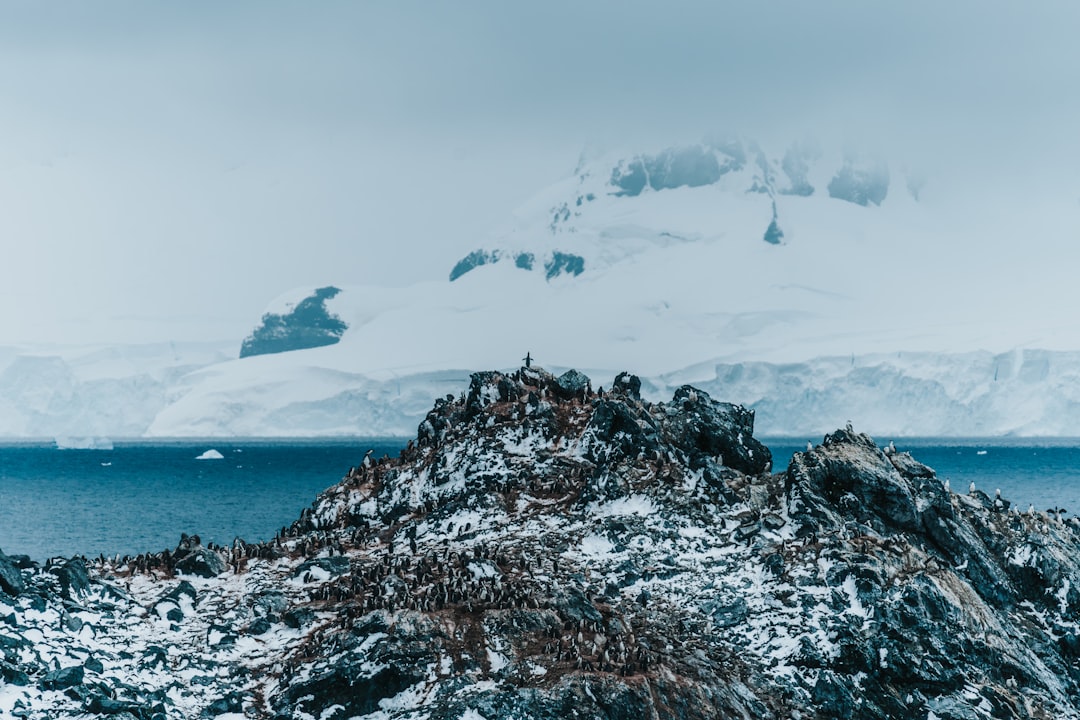The Drake Passage, a body of water located between the southern tip of South America and Antarctica, is renowned for its tumultuous seas and rich marine biodiversity. Spanning approximately 600 miles, it serves as a critical conduit for ocean currents and plays a significant role in global climate regulation. The passage is often characterized by its unpredictable weather patterns and strong currents, making it a formidable challenge for sailors and explorers alike.
Its unique geographical position not only connects the Atlantic and Pacific Oceans but also acts as a barrier to the cold Antarctic waters, creating a distinct marine ecosystem that is home to various species of whales, seals, and seabirds. In contrast, the North Sea, situated between Great Britain and mainland Europe, is a relatively shallow sea that has been a vital area for trade and fishing for centuries. This body of water is known for its rich fishing grounds, particularly for species such as cod, haddock, and herring.
The North Sea has also been a focal point for energy production, with numerous oil rigs and wind farms dotting its surface. The cultural and historical significance of the North Sea cannot be overstated; it has been a highway for trade and exploration since ancient times, shaping the economies and societies of the surrounding nations.
Key Takeaways
- The Drake Passage is a narrow body of water between South America’s Cape Horn and the South Shetland Islands of Antarctica, known for its rough seas and strong winds, while the North Sea is a marginal sea of the Atlantic Ocean located between Great Britain, Scandinavia, Germany, the Netherlands, Belgium, and France.
- When planning a journey through the Drake Passage and North Sea, it is important to consider the season, weather conditions, and the type of vessel being used for the journey.
- Navigational challenges in the Drake Passage and North Sea include strong currents, icebergs, and unpredictable weather, requiring careful route planning and constant monitoring of navigational charts and weather forecasts.
- Weather patterns in the Drake Passage and North Sea can be highly variable, with strong winds, heavy precipitation, and rapidly changing conditions, making it essential for travelers to be prepared for all types of weather.
- Safety precautions for crossing the Drake Passage and North Sea include wearing appropriate clothing, securing all loose items on board, and familiarizing oneself with emergency procedures in case of adverse weather or other unforeseen circumstances.
Planning your journey through the Drake Passage and North Sea
Planning a journey through the Drake Passage and North Sea requires careful consideration of various factors, including timing, vessel selection, and route planning. The best time to traverse the Drake Passage is typically during the austral summer months from November to March when weather conditions are generally more favorable. Travelers should also consider their vessel’s capabilities; sturdy ships designed for rough seas are essential for navigating the unpredictable waters of the Drake Passage.
For those venturing into the North Sea, the spring and summer months offer milder weather, making it an ideal time for exploration. In addition to timing and vessel selection, route planning is crucial for a successful journey. The Drake Passage offers several routes depending on the desired destination in Antarctica or South America.
Similarly, the North Sea has well-established shipping lanes that can be utilized for efficient navigation. Travelers should familiarize themselves with local maritime regulations and potential hazards along their chosen routes. Engaging with experienced navigators or joining guided expeditions can enhance safety and provide valuable insights into the unique challenges of these waters.
Navigational challenges and considerations in the Drake Passage and North Sea

Navigating the Drake Passage presents numerous challenges due to its notorious weather conditions and strong currents. The convergence of cold Antarctic waters with warmer currents creates unpredictable swells that can reach heights of over 30 feet. Mariners must be adept at reading weather patterns and understanding oceanographic conditions to ensure safe passage.
Additionally, the presence of icebergs and floating ice poses significant hazards, particularly during certain times of the year when ice melt is prevalent. Navigators must remain vigilant and utilize advanced radar systems to detect potential obstacles in their path. In the North Sea, navigational challenges are often related to shallow waters, busy shipping lanes, and unpredictable weather changes.
Furthermore, the North Sea is one of the busiest maritime regions in the world, with commercial shipping traffic frequently crossing paths with fishing boats and recreational vessels. Mariners must be well-versed in collision avoidance techniques and maintain constant communication with maritime traffic control to ensure safe navigation through this bustling waterway.
Weather patterns and conditions in the Drake Passage and North Sea
| Location | Weather Patterns | Conditions |
|---|---|---|
| Drake Passage | Strong winds, high waves | Rough seas, challenging navigation |
| North Sea | Variable winds, frequent storms | Cold temperatures, fog, heavy precipitation |
The weather patterns in the Drake Passage are notoriously volatile, characterized by rapid changes that can occur within hours. Storms can develop quickly, bringing high winds and rough seas that challenge even the most experienced sailors. The passage is influenced by the Antarctic Circumpolar Current, which contributes to its turbulent conditions.
Mariners must be prepared for sudden shifts in weather, including fog, rain, and snow, which can significantly reduce visibility and complicate navigation. Conversely, the North Sea experiences a more temperate climate but is not without its own weather-related challenges. The region is subject to frequent storms, particularly during autumn and winter months when low-pressure systems move across Europe.
Understanding local weather forecasts and being prepared for changing conditions is essential for anyone planning to navigate these waters.
Safety precautions and emergency procedures for crossing the Drake Passage and North Sea
Safety is paramount when crossing the Drake Passage or navigating the North Sea. Mariners should equip their vessels with essential safety gear, including life jackets, flares, first aid kits, and emergency beacons. Regular safety drills should be conducted to ensure that all crew members are familiar with emergency procedures in case of adverse conditions or accidents at sea.
Additionally, maintaining an up-to-date communication system is crucial for receiving weather updates and coordinating with rescue services if necessary. In the event of an emergency while crossing these challenging waters, having a well-defined emergency plan can make all the difference. Crew members should be trained in man-overboard procedures, fire-fighting techniques, and how to handle medical emergencies on board.
Establishing clear communication protocols among crew members ensures that everyone knows their roles during a crisis. Furthermore, mariners should always have contingency plans in place for abandoning ship if necessary, including knowledge of nearby rescue stations or safe havens.
Wildlife encounters in the Drake Passage and North Sea

The Drake Passage is renowned for its rich marine life, offering opportunities for wildlife encounters that are both thrilling and educational. Whales are among the most sought-after sightings in these waters; species such as humpback whales, orcas, and blue whales can often be spotted during migration seasons. Additionally, seabirds like albatrosses and petrels soar above the waves, providing a stunning backdrop to any journey through this region.
For nature enthusiasts, observing these magnificent creatures in their natural habitat is an unforgettable experience. In contrast, while the North Sea may not boast the same level of biodiversity as the Drake Passage, it still offers unique wildlife encounters. Seals are commonly seen basking on rocky shores or swimming alongside boats, while various species of fish thrive in its nutrient-rich waters.
Birdwatchers will find plenty to admire as well; migratory birds flock to coastal areas during breeding seasons. Engaging with local wildlife experts or participating in guided tours can enhance these encounters by providing insights into the behaviors and habitats of these fascinating creatures.
Historical significance and exploration of the Drake Passage and North Sea
The historical significance of both the Drake Passage and North Sea cannot be overstated; they have played pivotal roles in maritime exploration and trade throughout history. The Drake Passage was named after Sir Francis Drake, who became one of the first Europeans to navigate these treacherous waters during his circumnavigation of the globe in the late 16th century. His journey opened up new trade routes and contributed to European exploration of South America and beyond.
Similarly, the North Sea has been a vital artery for trade since ancient times. The Vikings utilized its waters for exploration and conquest during their expeditions across Europe. Over centuries, it has facilitated commerce between nations, shaping economies and cultures along its shores.
The discovery of oil reserves in the 20th century further transformed the region’s significance, leading to economic booms for countries bordering the North Sea.
Cultural experiences and local traditions in the regions surrounding the Drake Passage and North Sea
The regions surrounding both the Drake Passage and North Sea are rich in cultural experiences that reflect their maritime heritage. In South America, particularly in Chilean ports like Ushuaia—the gateway to Antarctica—visitors can immerse themselves in local traditions that celebrate seafaring life. Festivals often feature music, dance, and culinary delights that highlight regional seafood dishes.
Engaging with local communities provides travelers with insights into their history and connection to these waters. On the other hand, coastal towns around the North Sea offer a blend of cultural experiences rooted in fishing traditions and maritime history. Countries like Norway, Denmark, and Scotland boast vibrant fishing communities where visitors can participate in traditional fishing practices or enjoy fresh seafood at local markets.
Festivals celebrating maritime heritage often include boat races, craft fairs, and storytelling events that honor seafaring legends passed down through generations.
Recommended routes and itineraries for navigating the Drake Passage and North Sea
When planning a journey through these waters, selecting recommended routes can enhance both safety and enjoyment. For those traversing the Drake Passage en route to Antarctica, popular itineraries often include stops at iconic locations such as Cape Horn or Deception Island—known for its volcanic landscapes. These routes allow travelers to experience breathtaking scenery while maximizing wildlife encounters along the way.
In contrast, navigating the North Sea offers various options depending on one’s interests—whether it be exploring historic ports or indulging in culinary delights along coastal towns. Recommended itineraries may include routes that connect major cities like Amsterdam or Hamburg with picturesque fishing villages along Norway’s fjords or Scotland’s rugged coastline. Each route presents unique opportunities for cultural immersion while showcasing the natural beauty of this dynamic maritime region.
Tips for a comfortable and enjoyable journey through the Drake Passage and North Sea
To ensure a comfortable journey through these challenging waters, travelers should prioritize preparation before setting sail. Packing appropriate clothing layers is essential; temperatures can fluctuate dramatically between day and night or due to changing weather conditions at sea. Waterproof gear is also advisable given potential rain or spray from waves during rough passages.
Additionally, staying informed about onboard amenities can enhance comfort levels during long voyages across these waters. Many modern vessels offer comfortable accommodations along with dining options featuring local cuisine—providing an opportunity to savor regional flavors while enjoying stunning views from deckside lounges or dining areas.
Environmental conservation and sustainability efforts in the Drake Passage and North Sea region
As awareness of environmental issues grows globally, efforts toward conservation in both the Drake Passage and North Sea have gained momentum among governments, organizations, and local communities alike. In recent years, initiatives aimed at protecting marine ecosystems have been implemented—ranging from establishing marine protected areas (MPAs) to regulating fishing practices that threaten vulnerable species. In addition to regulatory measures aimed at preserving biodiversity within these waters, educational programs focused on sustainable tourism practices have emerged as vital components of conservation efforts.
By promoting responsible travel behaviors among visitors—such as minimizing waste generation or respecting wildlife habitats—stakeholders hope to foster a culture of stewardship that ensures future generations can continue to enjoy these remarkable maritime regions while safeguarding their ecological integrity. Through understanding these diverse aspects of navigating both the Drake Passage and North Sea—from planning journeys to appreciating cultural experiences—travelers can embark on memorable adventures while contributing positively toward environmental conservation efforts within these extraordinary marine environments.
The Drake Passage and the North Sea are two significant maritime regions that have played crucial roles in global navigation and climate studies. The Drake Passage, located between the southern tip of South America and Antarctica, is known for its challenging weather conditions and strong ocean currents, making it a critical area for understanding oceanic circulation patterns. Similarly, the North Sea, bordered by several European countries, is vital for its rich marine biodiversity and economic importance, particularly in oil and gas exploration. For more insights into these fascinating maritime regions, you can explore a related article on MyGeoQuest, which delves into the geographical and environmental significance of these waters.
WATCH NOW! Drake Passage: Earth’s Deadliest Waters Revealed
FAQs
What is the Drake Passage?
The Drake Passage is a body of water located between the southern tip of South America and the northern tip of the Antarctic Peninsula. It connects the southwestern part of the Atlantic Ocean with the southeastern part of the Pacific Ocean.
What is the North Sea?
The North Sea is a marginal sea of the Atlantic Ocean located between Great Britain, Scandinavia, Germany, the Netherlands, Belgium, and France. It is known for its rich biodiversity and is an important area for fishing, shipping, and offshore oil and gas production.
What are the main characteristics of the Drake Passage?
The Drake Passage is known for its rough seas and strong winds, making it one of the most challenging and unpredictable bodies of water for sailors to navigate. It is also a key location for the study of oceanography and climate due to its role in the circulation of the world’s oceans.
What are the main characteristics of the North Sea?
The North Sea is relatively shallow, with an average depth of 95 meters. It is a productive fishing ground and is home to a diverse range of marine life, including fish, birds, and marine mammals. The North Sea also has a long history of human activity, including fishing, shipping, and offshore oil and gas extraction.
How are the Drake Passage and North Sea important for global climate?
The Drake Passage plays a crucial role in the circulation of the world’s oceans, as it is a major pathway for the movement of water between the Atlantic and Pacific Oceans. This has a significant impact on global climate patterns. The North Sea also plays a role in regulating regional climate and is affected by global climate change.
What are the main economic activities in the Drake Passage and North Sea?
The Drake Passage is primarily used for scientific research and tourism, with limited commercial shipping due to its challenging conditions. The North Sea, on the other hand, is a major hub for fishing, shipping, and offshore oil and gas production, making it an important economic region for the countries that border it.
